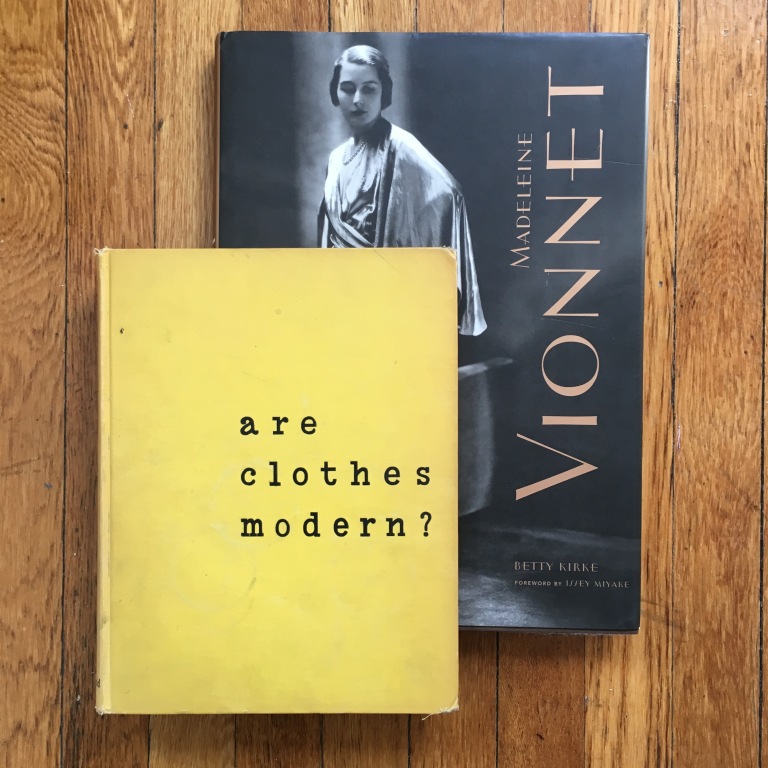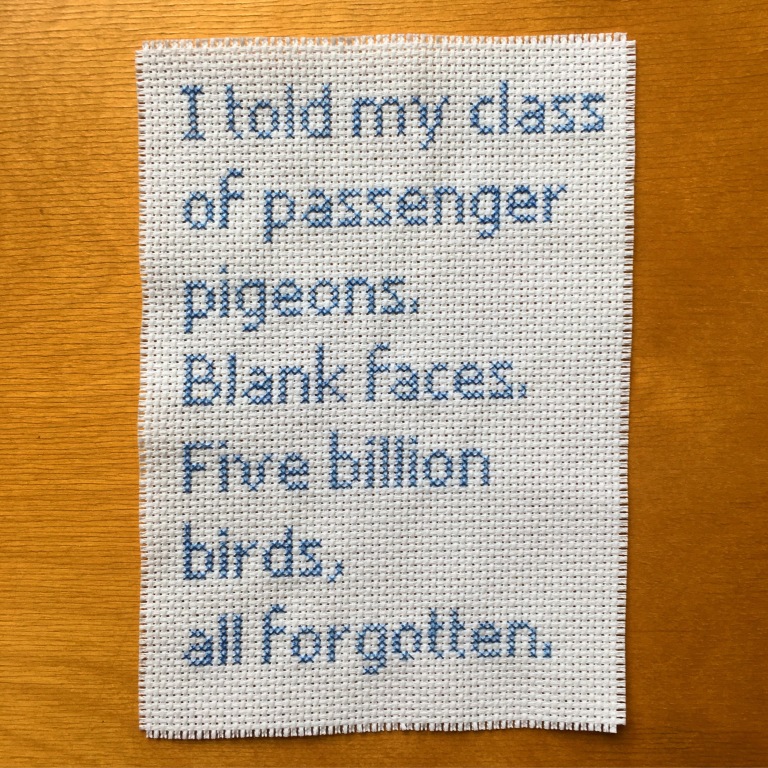
Welcome to this first post on a blog that will document my time as the 2017 artist-in-residence with the UTS Library. I am thrilled and honoured to be the resident! I did both my undergraduate degree and doctorate at UTS, and I first set foot at the UTS Library some 21 years ago. It is for me an incredibly special place. The work that I am most known for, on zero waste fashion design, germinated during countless hours spent at the Library. Stumbling on the book of Yoshiki Hishinuma’s work was among those moments. So was finding Bernard Rudofsky’s ‘Are Clothes Modern?’ and immersing in his critique of modern fashion. Ditto for being among the first to loan out the visionary Betty Kirke’s book on Madeleine Vionnet, when it came out in English in 1998 (the Japanese version had been published several years earlier). These for me were magical moments, and very much formative ones in the late 1990s. Then, when the opportunity to do a PhD presented itself in 2004, the Library once more became a second home for me. It has now been more than seven years since my last physical visit to the Library and I cannot wait to return! There has been a small delay with my temporary work visa however I expect this to be resolved imminently and be on my way.
I am undertaking two projects during the residency, connected by the method of making and the research approach, with the two also being inseparable from each other. One focuses on the UTS Library as a vibrant sharing economy: I am interested in the experiences of discovery that the Library users have, not unlike my encounters with Rudofsky and Hishinuma. During 2016 writing through cross-stitching has become a major aspect of my scholarly work, in the form of using cross-stitched writing as a tool in qualitative research as well as cross-stitching poetry that I write in response to my research and creative practice. During the residency I will build on this “slow writing”, combining it with “slow drawing”. I will employ cross-stitching to explore and further disseminate discoveries about people’s experiences of shared use. Questions to Library users include:
Why and how do you use the UTS library?
What makes the UTS Library unique for you?
What does it mean for you to share the UTS Library with other users?
Does the library facilitate shared experiences beyond sharing books and other resources?
What message would you like to send to a UTS Library visitor in 2117?
As well as recording and the interviews for analysis, I invite Library users to respond by writing, drawing and embroidering on pieces of fabric. As responses accumulate, I will compile these textile responses thematically into one or several collages. Hand-embroidery will function as both physical and visual adhesive to tell compelling collective stories about the library. The embroidered collage/s will respond to and work collaboratively with the analysis of the interviews. Scholarship by Parker (2010) and Wellesley-Smith (2015) has been instructive in my designing this research.

In the second project I investigate a Sydney perspective within a broader theme that I am researching, on how people in urban environments experience nature and what that could me for myself as an educator and scholar of sustainability. This work builds from ideas put forth by the Australian scholar Tim Low (2017) on how our ideas of what is nature are evolving. My intention is to write a visual poem drawing from the responses and cross-stitch the poem. This is connected to research I am currently conducting on the same topic within a New York City context, building on Blechman’s (2013) insightful work on New Yorkers and feral pigeons. As a teacher of sustainability I am interested in understanding people’s experience and understanding of nature, in order to understand resistance to action to mitigate climate change, for example. At the same time I’m striving to create a piece that resonates with its audience and invites the viewer to contemplate on their own experiences of nature. Questions that I ask in interviews include:
Tell me about your most recent experience of nature within Sydney city.
Do you have a favourite wild animal in Sydney? Least favourite? Why?
If you think about Sydney as an ecosystem and a part of nature, what role in its ecology does the UTS Library have?
Can the UTS Library ‘store’ experiences of nature? How?
I look forward to sharing about the projects over the next several months here. Once I know the exact dates of my on-site work, I’ll post them here, of course. If you’re a member of UTS community, please make sure to say hello at the Library!
References:
Blechman, A.D. (2013) ‘Flying Rats’, in K. Nagy & P.D. Johnson II (eds.), Trash Animals. How we live with nature’s filthy, feral, invasive and unwanted species, University of Minnesota Press, Minneapolis & London, pp. 221-242.
Hishinuma, Y. (ed.) (1986) Clothes by Yoshiki Hishinuma, Yobisha, Co., Tokyo.
Kirke, B. (1998) Madeleine Vionnet, Chronicle Books, San Francisco.
Low, T. (2017) The New Nature. Penguin Random House, Sydney.
Parker, R. (2010) The Subversive Stitch. Embroidery and the Making of the Feminine. I.B. Tauris, London & New York.
Rudofsky, B. (1947) Are clothes modern? Paul Theobald, Chicago.
Wellesley-Smith, C. (2015) Slow Stitch. Mindful and contemplative textile art. Batsford, London.

I’m very excited to see what comes next, libraries are so undervalued these days, I love the bibliotheque forney in paris, it’s just reopened and has so many new books. I didn’t realise that you had studied in Australia, now I’m even more intrigued!
LikeLike
I’m very excited to see what comes next, libraries are so undervalued these days, I love the bibliotheque forney in paris, it’s just reopened and has so many new books. I didn’t realise that you had studied in Australia, now I’m even more intrigued!
LikeLike
Yeah, I lived in Sydney for 14 years, 1996-2009 🙂
LikeLike
OK, I’m now gonna hold my breath until you get here!
Seriously, we cannot wait:)
LikeLike
Also, my mother has always made all of her own clothes. I intend to drag her in to meet you, along with her crazy fabric-collecting colleague-in-crime. Maybe you can help them with all the off-cuts they still have! Actually, she has been quilting now for some years, so maybe it isn’t a problem now.
LikeLike